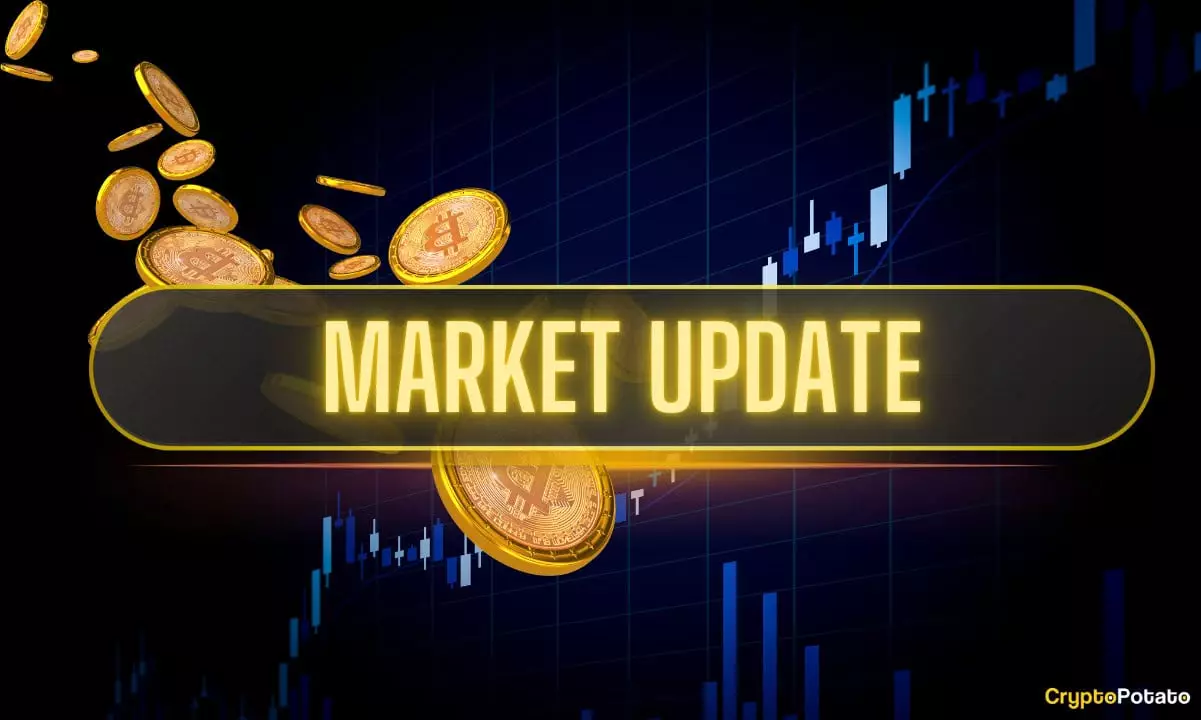The past week in cryptocurrency markets has once again underlined an inconvenient truth for skeptics: crypto is no longer insulated from global political and economic turmoil. While the dramatic headlines of conflict between Iran and Israel escalated fears across traditional asset classes, Bitcoin and its brethren faced unchartered volatility reflecting a growing institutional footprint. Despite Bitcoin’s seemingly stable weekly price, the underlying price action signaled intense nervousness—with over $1 billion in liquidations sparked by the news of U.S. military involvement. This is the new reality of crypto markets becoming increasingly interwoven with traditional finance and geopolitics, challenging the myth of decentralization as impermeable to external shocks.
Yet, this turbulence also hinted at a new maturity. The near-immediate deflation of tensions following what critics called a staged Iranian retaliation demonstrated how markets quickly priced in de-escalation scenarios. Bitcoin rebounded sharply, clawing its way from an ominous dip below $100,000 back toward $108,000. The resilience of Bitcoin, even as most altcoins were battered, confirmed the growing dominance of the flagship cryptocurrency as a relative safe haven within the chaotic digital asset ecosystem.
Bitcoin’s Absorptive Capacity: Evidence of Market Robustness
One of the most striking developments during recent weeks is the sheer volume of Bitcoin absorbed by buyers even while price action threatened a collapse. Approximately 720,000 BTC changed hands, predominantly offloaded by newer holders, yet the market withstood this considerable selling pressure without suffering a catastrophic crash. Historically, similar episodes of large-scale accumulation have preceded monumental rallies—most notably the run-ups from $28,000 to $60,000 and then from $60,000 to $100,000.
This phenomenon confirms a deeper, often overlooked, narrative about market maturity: increased participation by long-term holders (LTH) tempering the erratic behaviors of short-term speculators (STH). The rising LTH/STH ratio indicates growing confidence in Bitcoin’s value proposition, suggesting that even amid geopolitical uncertainty, savvy investors see an opportunity rather than a threat. While history does not repeat itself precisely, patterns in investor behavior do tend to rhyme—and the current on-chain metrics have historically been harbingers of bullish momentum.
Mastercard-Chainlink Partnership: The Dawn of Crypto Normalization
Another positive development worth underscoring is the partnership between Chainlink and Mastercard—a collaboration poised to bring seamless cryptocurrency access to 3 billion Mastercard cardholders worldwide. This is not just a corporate alliance but a signal of crypto’s inexorable journey from niche speculation to mainstream financial service. It is easy to overlook amid price fluctuations and legal drama, but this partnership is a landmark example of adoption that has tangible implications for the future of currency and payments.
From a center-right liberal perspective, this reflects the power of free markets and innovation to overcome regulation-induced inertia. Instead of government mandates forcing crypto usage, real-world enterprise collaborations are demonstrating how voluntary adoption driven by consumer convenience and choice will gradually rewrite the financial landscape. This kind of organic growth tends to produce more sustainable and less speculative market developments.
Ripple’s Legal Quagmire: An Ambiguous Test for Regulatory Clarity
While progress happens, challenges persist—none more evident than the drawn-out legal battle between Ripple and the U.S. Securities and Exchange Commission (SEC). The court’s rejection of the parties’ motion for an indicative ruling extends uncertainty indefinitely, throwing a wrench in hopes for a timely resolution. This is detrimental not just for XRP holders but for the industry as a whole. The overreach and vagueness of regulatory frameworks in the U.S. continue to stifle innovation and shake investor confidence.
The drawn-out case shines a glaring spotlight on the need for modernization in securities laws to accommodate digital assets clearly and fairly. The absence of decisive regulators fostering legal certainty encourages fragmented global regulation, further placing the U.S. at a disadvantage in the burgeoning digital economy. From a center-right vantage point, this calls for balanced regulatory reform—protecting investors yet avoiding anti-competitive or heavy-handed policies that hamper entrepreneurial activity.
Stablecoin Valuations and Market Structure: The New Power Players
Stablecoins continue to grow in influence, with Circle’s valuation now soaring past $66 billion following a successful public offering. This milestone not only reflects market confidence in algorithmic and fiat-backed stablecoins’ role in crypto infrastructure but also highlights their ambiguously growing power over monetary flows. This raises critical questions about concentration and systemic risk within decentralized finance ecosystems increasingly dependent on these tokens for liquidity and transactional efficiency.
While stablecoins offer utility, their expansion could provoke unintended consequences—especially if intertwined with traditional banking sectors without clear oversight. Market-driven innovation is vital, but governments and investors alike must remain vigilant to prevent new forms of financial fragility masked by crypto’s veneer of disruption.
BTC’s Dominance: A Double-Edged Sword?
Bitcoin’s unwavering dominance, now at approximately 62.7%, remains a comforting anchor for investors scared by altcoin volatility and political crises. Yet, this hegemony also creates a monoculture risk where innovation may stagnate and speculators migrate en masse between a handful of assets. Technological progress in the crypto space has always been synonymous with diversity in protocols and ideas.
A healthy market ecosystem requires a multiplicity of players, fostering competition that pressures Bitcoin and others to evolve. Over-reliance on one asset simply perpetuates a similar volatility that traditional markets suffer when too many eggs are thrown into one basket—counterproductive to crypto’s promise of diversification and technological transformation.
—
In sum, despite the surface-level noise of geopolitical instability, regulatory uncertainty, and brutal price shifts, the broader crypto ecosystem is quietly advancing toward greater maturity. Institutional absorption of risk, strategic alliances with legacy financial firms, and robust on-chain metrics collectively reveal a community leveraging adversity as a catalyst rather than a deterrent. The ongoing challenge remains one of nuanced regulation and ecosystem diversification—necessary ingredients to fully realize crypto’s revolutionary potential without succumbing to the pitfalls of centralization or shortsighted policymaking.

